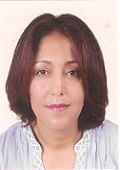
Aziza Bounhir
Cadi Ayyad University
Morocco
Title: Aerosol load in Morocco in the framework of the ELT prospect
Biography
Biography: Aziza Bounhir
Abstract
A major concern for the community of astronomers is to find the best places on earth suitable for astronomical observations, where the sky is the clearest with least turbulent atmosphere. Satellite measurements and meteorological databases, by scanning the whole earth, are a unique tool to aid in decision making concerning the pre-selection of astronomical sites. Morocco was part in the extremely large telescope (ELT) project prospect as Oukaimeden (latitude=31°12’32’’N, longitude=7°52’52’’W, altitude=2700m) observatory was one of the candidates. Light pollution, astro-climatique parameters, aerosol load, exctinction coefficient are key parameters in the selection process. In this contribution we focuse on site testing in terms of aerosol loadings that dramatically affects the observations and most importantly in the visible and infrared wavelengths. The AERONET (AErosol RObotic NETwork) possesses hundreds of radiometers covering almost the entire globe and providing ground based measurements of the aerosol optical depth is a very precious tool. We try to adress two questions ; the first one concerne the reliability of the sky transpency satellite product, and the other one concernes the inference of the aerosol optical depth to higher altitudes typically where astronomical observatories are built. For that purpose, we used the most popular satellite products such as TOMS EP, TOMS OMI, MISR, MODIS Terra and MODIS Aqua, seven AERONET stations, and The Carlsberg Meridian Telescope nightly values of the total extinction coefficient at the obnservatory of Roque de Los Muchachos (ORM; latitude=28º45’36’’N, longitude=17º52’57’’W, altitude=2326m).

